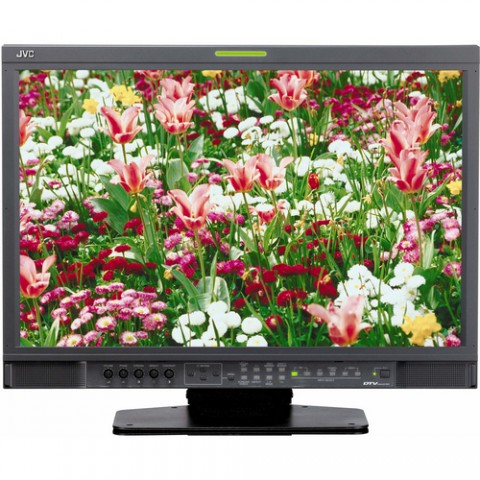A must have for any colorist is a reliable and calibrated broadcast monitor. It’s a colorist’s best friend! Don’t just use a computer monitor. These rarely (if ever) have the right controls to properly calibrate the monitor.
For those of you grading from your computer monitor… don’t. We’ve all done it, especially when we’ve had to grade on a laptop, but it’s really a big no-no. A properly calibrated broadcast monitor is crucial to a colorist. A good, rock-solid monitor let’s you grade confidently, knowing exactly what your grades are going to look like. Now, I’m a bit (well, more than a bit) old-school when it comes to monitors, so here’s my personal opinions on broadcast monitors:
Computer monitors are not broadcast monitors!
Computer monitors have made leaps and bounds in color accuracy, contrast, etc., but I still can’t bring myself to use them for color grading. They rarely (if ever) have the right controls to calibrate them, and while products like the Spyder and other calibration devices exist and are probably good, I still don’t trust them.
CRTs are the king of contrast, but LCDs work too…
I love CRTs. Back when I only worked with SD projects, I used one of my favorite monitors of all time – the Sony PVM series. Great contrast, great color. Love it! On the downside (and a big downside), they are heavy, bulky, expensive, and rare compared to LCDs (a Pro-level sony HD CRT is over $16,000). That’s a lot of downsides, so LCDs win. When they first came out, the contrast on LCDs was abysmal, but these days they hold up pretty well in the right environment.
You gotta have a “Blue Only” feature and the 4 big knobs for proper calibration.
I know they have all of these fancy new ways of calibrating monitors, but I tend to stick with the old school method:
- Put up SMPTE color bars
- Push the “Blue Only” button (this shows only the blue channel)
- Adjust the phase and chroma knobs so that you can’t tell the difference between the top (taller) bars and the middle (short) bars below them
- Turn off “Blue Only”
- Adjust the brightness knob so you can just barely see the “pluge” (Look for 3 small bars below the red bar. The right one if the pluge). The left and middle bars should both be black.
- Adjust the contrast knob so that you get a nice, crisp white (turn it up until it no longer looks gray, but not above that point).
This method works great, compensates for the lighting you work in (that’s what the pluge is for), and is pretty reliable until the monitor itself starts to go bad.
@kpmiracle asked me on twitter what Broadcast HD Monitor(s) I recommended, so here they are:
Right now I’m using a JVC DT-V24L1U:
It’s a 24″ monitor that has a DVI input (so it doubles as a second computer monitor when I’m not using the Decklink output), and a component input for HD viewing (the HD-SDI option was significantly more expensive, and I was okay with using component). and the JVCs look great, with rich blacks, bright whites, and the right controls, all for a comparatively low price.
Sadly, this model has been discontinued, but there are new models out, like the JVC DT-R24L4DU. I’ve also heard good things about the Sony LMD series, as well as the Panasonic and Ikegami models. The JVCs were just at the right price for me, and looked great.
There are other more expensive options like projection, but this website is more for those on a medium budget… One thing to remember when using a broadcast monitor – most of them do not allow LUTs to be loaded directly into the monitor (like a projector would), so you’re almost always viewing the REC 709 colorspace. If you’re working on a project that is in a different colorspace, like XYZ or a film stock print LUT, make sure you compensate for this elsewhere (probably in software). That said, if you’re working on a project in a different colorspace, it’s probably a high-end project and you already know how to compensate anyway!
